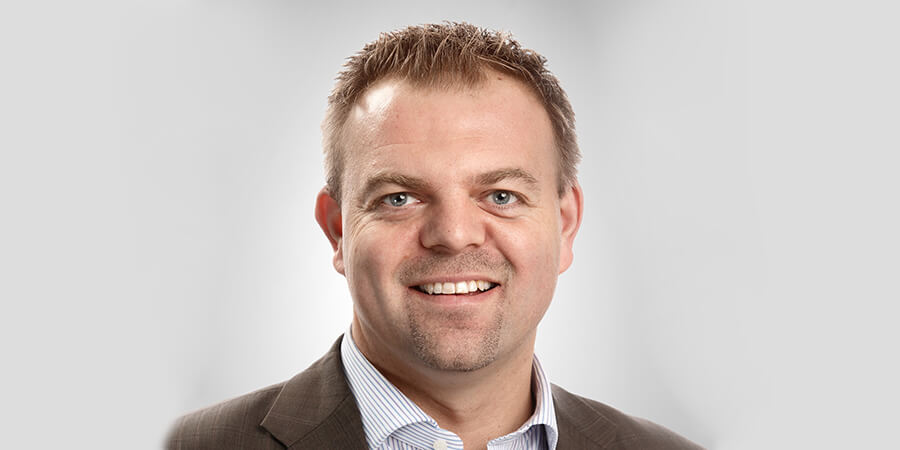With the Asia Pacific becoming a rising economic and technological epicenter, submarine cables have become pivotal in sustaining the region's growth and enhancing global interconnectivity. In an exclusive interview, Telecom Review Asia connects with Thomas Soerensen, VP of global submarine solutions, Ciena, to learn about ongoing developments and innovations within this dynamic and vital telecommunications ecosystem.
What recent trends have you observed in the Asia-Pacific region regarding the demand for submarine cable capacity, and how are these trends influencing the expansion plans of cable operators?
According to TeleGeography’s Global Internet Geography research, Asia is the world’s second-fastest-growing region for international traffic and remains a key hub of internet activity. Driven by the continued interest in internet and cloud-based services, both global hyperscalers and wholesale network providers are rapidly investing in the region, creating significant demand for more bandwidth. According to the same research report, Intra-Asian internet bandwidth has steadily increased from 36% in 2012 to 60% in 2022.
To address the surging bandwidth needs from the Trans-Pacific corridor as well as intra-Asia demands, there’s been a surge in submarine cable construction, both from global hyperscalers and wholesale network providers. Additionally, submarine cable operators in the region are constantly looking at how they can upgrade their cables to expand existing capacity and remain adaptable to change.
Due to geopolitical sensitivities and growth in emerging markets, we also see multiple new Trans-Pacific cables to other landing stations in Asia, including Japan, Taiwan, the Philippines and Singapore, for increased landing site diversity.
What are some challenges that submarine cable operators encounter, and how is Ciena addressing these challenges with its solutions?
Challenges submarine cable operators face include maintaining pace with voracious and ongoing bandwidth demand growth, driving down operational and capital costs while improving sustainability, and addressing inevitable submarine cable faults. The latter is particularly challenging in the Asia-Pacific region due to increased marine activity, which is the majority cause of cable faults.
To help our customers address some of these challenges, Ciena assists by developing a strategy to maximize the returns on investments of their existing submarine network assets, while at the same time developing more innovative solutions that offer analytics-driven automation and sustainability.
Can you elaborate on some key advances in submarine cable technology and how Ciena supports operators in catering to diverse market needs and use cases in the region?
The introduction of coherent optical modems over a decade ago was a pivotal moment for the network industry, both overland and undersea. Such innovations have enabled submarine cable operators of all types to transport ever-increasing amounts of data across undersea network assets. Ciena recently announced our latest generation of WaveLogic 6 optical technology, where the WaveLogic 6 Extreme variant will become the optical transmission foundation of our GeoMesh Extreme solution, which changed how submarine and terrestrial backhaul networks were designed, deployed, and operated over a decade ago. Compared to WaveLogic 5 Extreme, WaveLogic 6 Extreme will provide a 50% reduction in power and space. It will also enable 1 Tb/s per channel over transpacific distances of 12,000km and be supported on existing host platforms to further reduce waste. WaveLogic 6 Extreme will provide impressive performance gains in a highly sustainable manner.
Together, these revolutionary technologies enable capacity to be added flexibly to transoceanic corridors, extend the life of existing wet plant assets, open previously closed wet plants to best-of-breed vendors and enable unprecedented capacities on both existing and new submarine cables. Along with operations software, analytics, and automation, these advancements significantly improve submarine business agility and margins.
Looking ahead to the next few years, how do you envision the subsea cable landscape shaping up in the Asia Pacific, and what role will Ciena play in driving innovation and growth in this dynamic market?
We see the commercial model continuing to evolve to capitalize on giant technical gains. There will be fundamental changes to the competitive landscape because higher fiber counts and intelligent branching units in the water will create increased complexity that can only be addressed with the increased adoption of analytics-driven software control and automation.
And these needs and challenges from the submarine community are what drive Ciena on a relentless path to innovation. The submarine networking battle will be won by the best business planning, financial management and personal relationships.
Sustainability and the environment remain top of mind. The industry is taking steps to monitor its impact on the environment — its carbon footprint — and to make a significant positive impact going forward. And this will ultimately contribute to how vendors, like Ciena, innovate.
Ciena will feature the latest enhancements to its GeoMesh Extreme submarine network solution, including the recently announced WaveLogic 6, at Submarine Networks World, occurring September 27–28 at the Suntec Convention Centre in Singapore.





